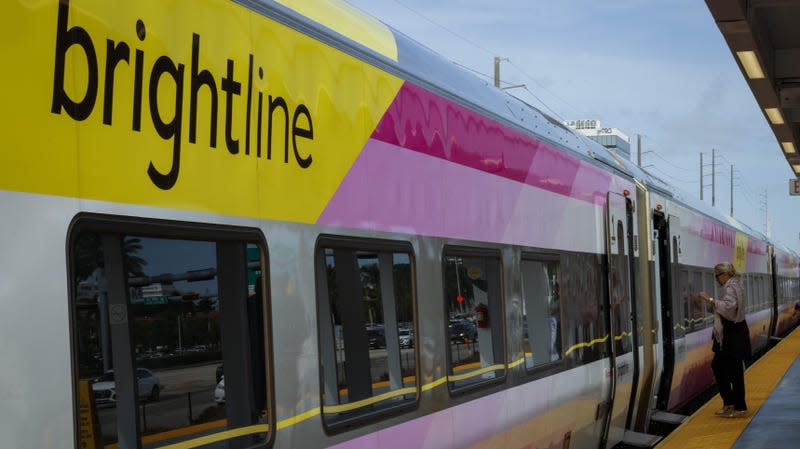Construction on America's First High-Speed Rail Has Begun

Ground was broken today on what is said to be America’s first high-speed rail. The project, which is designed to connect Los Angeles and Las Vegas via a 218-mile stretch of track that will be built across the Mojave desert, will be completed within the next four years, its backers say.
The proposed infrastructure project will stretch from the California city of Rancho Cucamonga to Vegas and is being headed by rail construction firm Brightline. In its description of the project, the company notes that the new route will be traveled by “all-electric, zero-emission trains” that will be capable of “reaching top speeds of 200 mph, getting passengers from Las Vegas to Rancho Cucamonga in about 2 hours and 10 minutes (2x faster than the normal drive time).” The project was helped along by $3 billion in federal funding supplied by the Biden administration, the Associated Press writes.
In a press release from Biden Transportation Secretary Pete Buttigieg, the government said the project would “remove an estimated 400,000 tons of carbon dioxide per year, bolster tourism, and create 35,000 good-paying jobs.”
“As the first true high-speed rail system in America, Brightline West will serve as the blueprint for connecting cities with fast, eco-friendly passenger rail throughout the country,” Brightline’s Founder and Chairman Wes Edens, previously said. “Connecting Las Vegas and Southern California will provide wide-spread public benefits to both states, creating thousands of jobs and jumpstarting a new level of economic competitiveness for the region. We appreciate the confidence placed in us by DOT and are ready to get to work.”
The AP also notes that Brightline already operates a railway system between Miami and Orlando in Florida. Gizmodo reached out to the company for details about its new project and will update this story if it responds.
Many countries around the world have modernized their rail systems. Much of Europe is connected by a bevy of efficient and comfortable train systems, while Japan’s bullet trains have long been a source of pride for the country. China is said to have the fastest trains in the world and it has built up a highly effective high-speed rail network in a period of just twenty years. The U.S., meanwhile, has largely failed to develop any sort of modernized rail travel, despite decades of talk about the benefits that such systems could bring to Americans.
One can only hope that this new effort won’t suffer the same fate as California’s long-suffering attempt to erect a high-speed rail service between Los Angeles and San Francisco. That project, which was originally approved by state voters in 2008, has—as of this year—completed less than a quarter of the proposed rail line and is currently missing billions of dollars in funding. In March, project leaders told California lawmakers that the full rail line that had originally been envisioned would need another $100 billion and years to complete.

